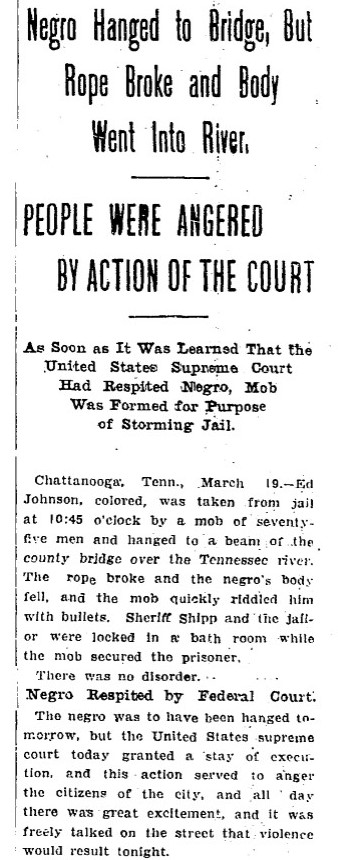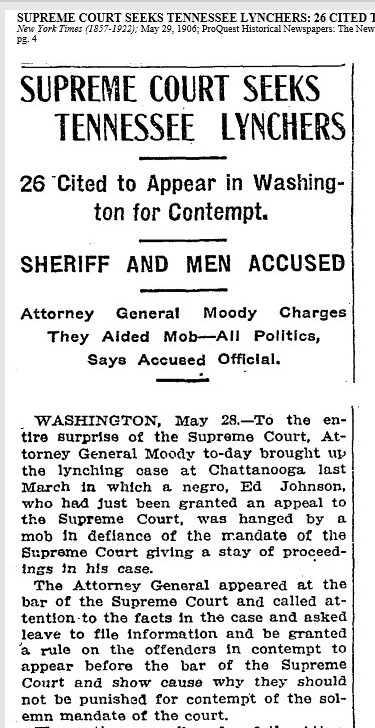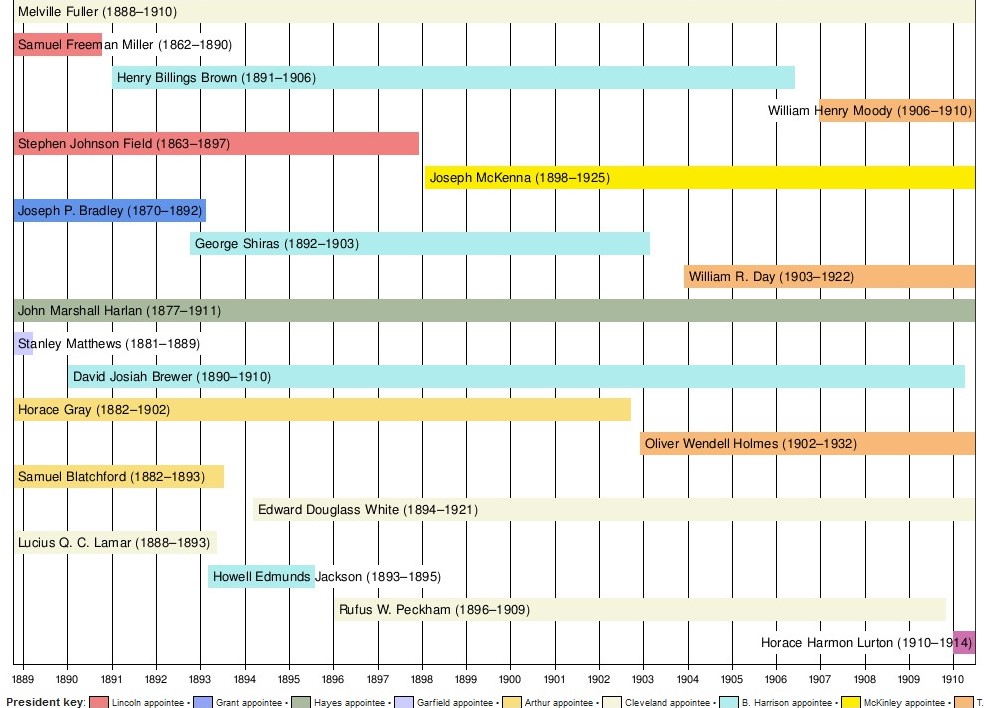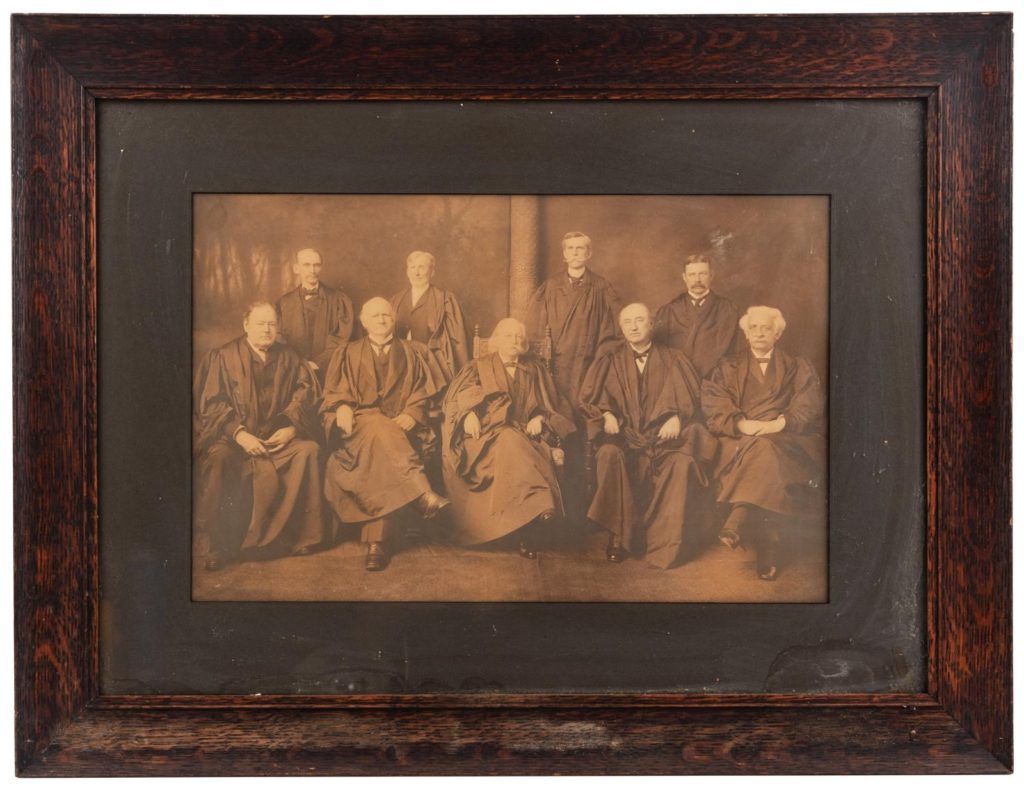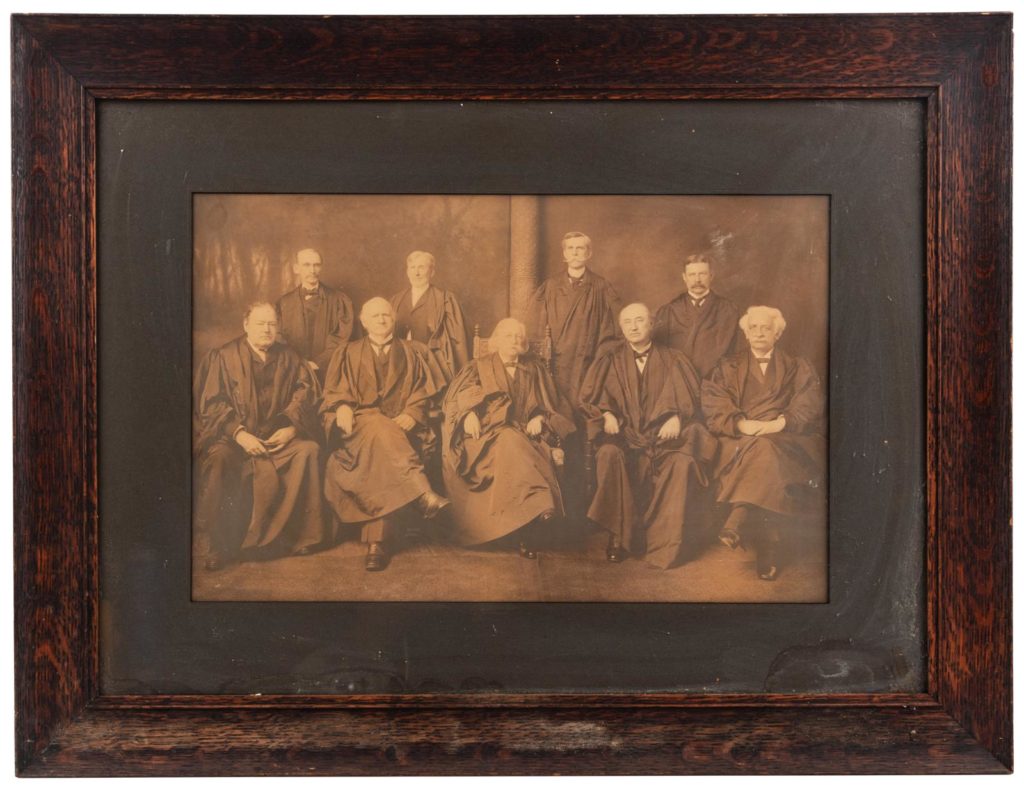 C.M. Bell Studios, Portrait of the United States Supreme Court, also known as the Fuller Court, ca. 1907. Graphic Arts Collection
C.M. Bell Studios, Portrait of the United States Supreme Court, also known as the Fuller Court, ca. 1907. Graphic Arts Collection
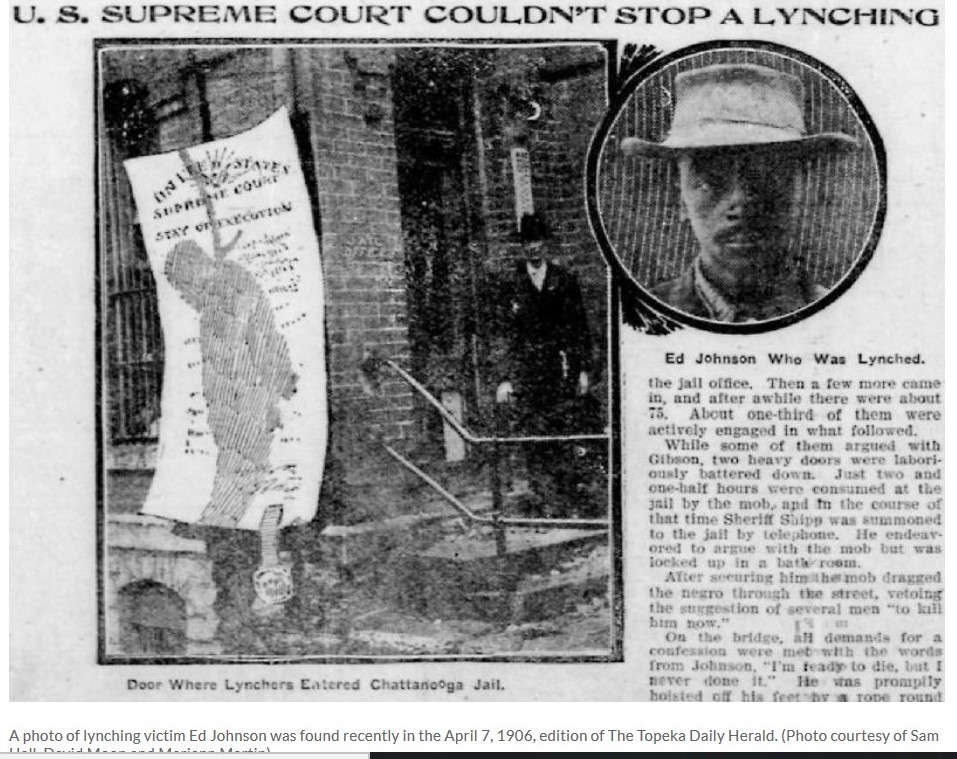 A photo of lynching victim Ed Johnson was found recently in the April 7, 1906, edition of The Topeka Daily Herald. (Photo courtesy of Sam Hall, David Moon and Mariann Martin)
A photo of lynching victim Ed Johnson was found recently in the April 7, 1906, edition of The Topeka Daily Herald. (Photo courtesy of Sam Hall, David Moon and Mariann Martin)
In January 1906, a 19 year old carpenter from Chattanooga, Tennessee named Ed Johnson was wrongly convicted of raping a young girl and quickly sentenced to death. He was black, she was white, and the jury was white. There was clear injustice and after hearing the details, United States Supreme Court Justice John Marshall Harlan issued a stay of execution.
Before the Court could hear the appeal, a mob was allowed to break into the jail and drag Johnson to a nearby bridge to be lynched. When the rope broke, guns were pulled and he was shot to death.
At President Theodore Roosevelt’s orders, U.S. Attorney General William Moody sent investigators to Tennessee and on May 28, Moody did something unprecedented, then and now. He filed a petition charging Sheriff Shipp, six deputies and 19 leaders of the lynch mob with contempt of the Supreme Court. The justices unanimously approved the petition and agreed to retain original jurisdiction in the matter.
What followed was United States v. Shipp, 203 U.S. 563 (1906), argued February 12 until June 29, 1907. This was the first and only time the Supreme Court tried a criminal trial. Chief Justice Fuller personally read his majority opinion on May 24, 1909, finding Shipp, one of his deputies and four leaders of the mob guilty of contempt. Shipp and two others were ordered to serve 90 days in jail, while the others were sentenced to 60 days, all at the U.S. jail in the District of Columbia. Like his co-defendants, Shipp was released early. Returning to Chattanooga by train on Jan. 30,
An article in the New York Times stated, “The open defiance of the Supreme Court of the United States has no parallel in the history of the court. No justice can say what will be done. All, however, agree in saying that the sanctity of the Supreme Court shall be upheld if the power resides in the court and the government to accomplish such a vindication of the majesty of the law.”
The Graphic Arts Collection recently acquired a studio portrait of the Fuller Court, which oversaw the criminal trial. The photograph was probably early in 1907, since Moody was elected to the court in December 1906. Top row: William Rufus Day (1849-1923), Joseph McKenna (1843-1926), Oliver Wendell Holmes (1841-1935), William Henry Moody (1853-1917). Bottom row: Edward Douglass White Jr. (1845-1921), John Marshall Harlan (1833-1911), Chief Justice Melville Weston Fuller (1833-1910), David Josiah Brewer (1837-1909), and Rufus W. Peckham (1838-1909)
“Ninety-four years after the lynching, in February 2000, Hamilton County Criminal Judge Doug Meyer overturned Johnson’s conviction after hearing arguments that Johnson did not receive a fair trial because of the all-white jury and the judge’s refusal to move the trial from Chattanooga, where there was much publicity about the case.”
https://www.facebook.com/pg/EdJohnsonProject/posts/
Mark Curriden and Leroy Phillps Jr., Contempt of court : the turn-of-the-century lynching that launched 100 years of federalism (New York: Anchor Books, 2001). Recap KF224.J63 C87 2001
Legal experts say that United States v. Shipp and its predecessor case, Tennessee v. Johnson, forever changed the practice of criminal law in the United States. Between them, the cases featured:
-
- The first grant of a federal habeas corpus petition by the U.S. Supreme Court in a pending state criminal case.
- The first stay of execution issued by the full Supreme Court in a state death penalty case that declared the state defendant to be a federal prisoner.
- The first time in which a black lawyer was lead counsel in a case before the Supreme Court.
- The first and only time in history that the Supreme Court retained original jurisdiction in a criminal case.
- The first criticism of state elected officials and courts by the Supreme Court for conducting criminal trials under the influence of the threat of mob rule, thus denying a defendant the right to a fair trial and undermining the rule of law.

